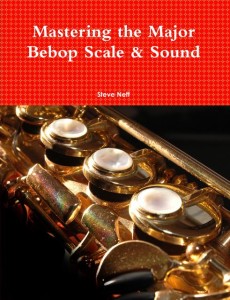Here’s a free sheet I give to all my students to learn their 12 major scales and major triads.
When I teach my students the major scales, I teach them to memorize all the scales on this sheet exactly as written. They should be able to play each scale on the sheet immediately when asked without mistakes. (If I start a student on saxophone in 4th grade then we would start learning this sheet in 5th grade as part of their weekly lesson assignment). I also ask them to memorize what flats or sharps are in each scale from left to right in the key signatures as well as how many flats or sharps are in each key. So for example, I might ask them to play the Eb major scale. The student would say “The Eb major scale has 3 flats. Bb, Eb and Ab. The Eb major triad is Eb, G and Bb.” and then they would play the scale from memory with no mistakes the first time. If I asked them to play the F# major scale they would say “The F# major scale has 6 sharps. F#, C#, G#, D#, A# and E#. The F# major triad is F#, A# and C#.”
Being able to mentally say what is in each scale is as important as being able to play each scale. It is especially important for student who tend to play by ear or perform by finger memory without thinking about what is in each scale. Having the student say what is in each scale makes sure that the student knows the scale mentally as well as being able to perform it. The right order of the flats and sharps is important for later music theory work and advanced topics so I make sure they learn the order of flats as BEADGCF and the order of sharps as FCGDAEB, (It helps to spend a week saying BEADGCF FCGDAEB over and over again until it is memorized. People will look at you weird but it is worth it…….)
I usually assign 1 to 3 scales a week depending on the student. I also review each of the scales already learned until all 12 major scales are learned. At the end we review all 12 major scales. The goal is not just to learn the scales for their lesson with me but to learn them so that they know them for the rest of their lives in the same way that they learn their times tables and know that 9×9=81.
I also have each student practice improvising using the notes of the scale over the play along Jamey Aebersold Vol. 24 “Major and Minor”. The focus is on hearing how each of the notes sound against the major tonality. For example, in the key of C, the note C is considered home base. E and G are considered like first and second base. Those notes are safe and you can stop on those notes. The other notes of the major scale D, F, A, and B all have a little more dissonance to them. D and A sound the most consonant of the four notes and F and B the most dissonant but all four notes feel like they want to go somewhere to resolve. B wants to go to C. A wants to go to G. D wants to go to C or E. F wants to go to E. etc…….. The student needs to practice to the play along and try to hear these consonant and dissonant notes and hear where the notes want to resolve and practice resolving them. This is a very important part of practicing improvising with these scales because you are training your ear to hear the notes and resolve them when needed.
CLICK HERE TO DOWNLOAD –> 12-major-scales
For more information and licks using the major scales check out my two books: Mastering Major Diatonic Patterns and Mastering the Major Bebop Scale & Sound. There are tons of great sounding lines and licks in these two books!
Mastering Major Diatonic Patterns
Mastering the Major Bebop Scale & Sound
I also have tons of video lessons in my Neffmusic store on the major scales.





Do you have a version of the scales for bass clef?
Thanks!
No, just for treble clef. Sorry.
sorry, i think i missed something here. where is the free cheat sheet? JJ DeHoyos
Half way down the page in the middle of the page it says “CLICK HERE TO DOWNLOAD –> 12-major-scales”. You click on that link and it opens up the 12 Major Scales page. You then save that page to your computer……..